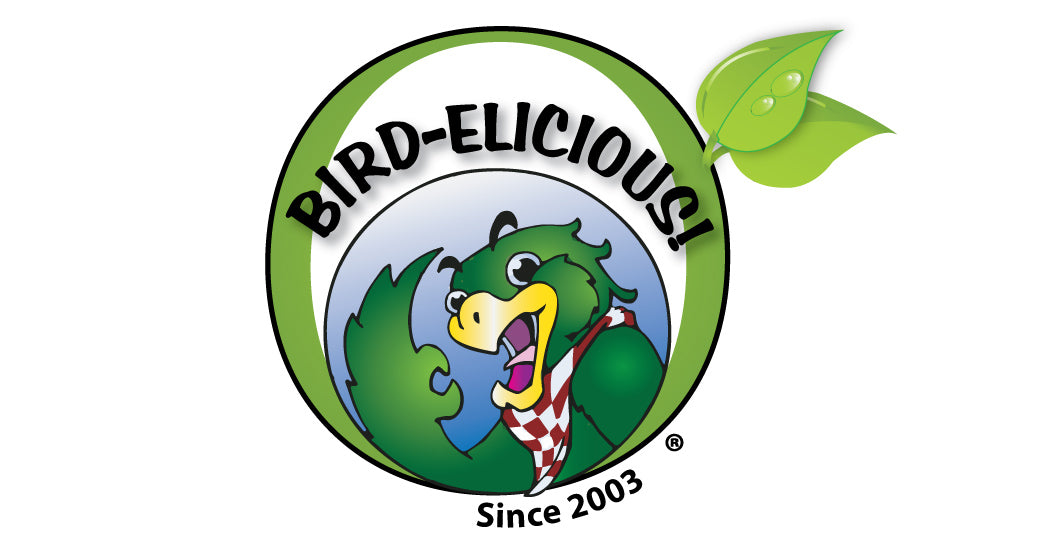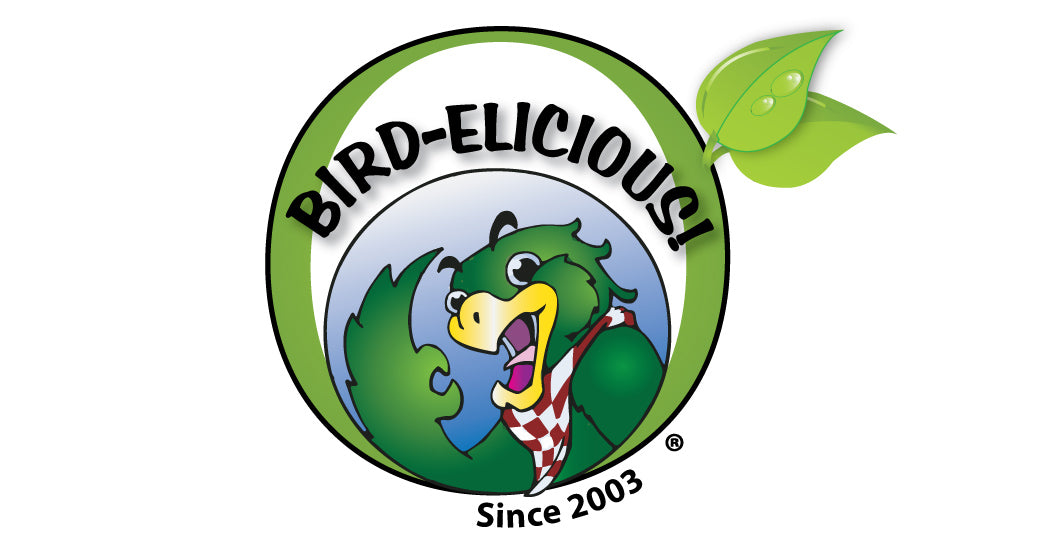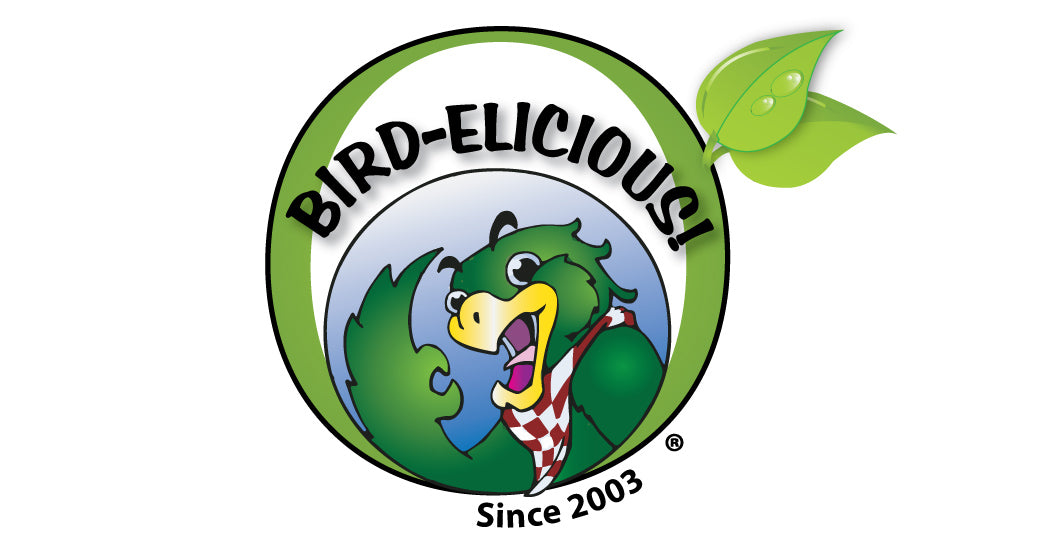See the vibrant coloring of these Macaws? Do you think they are this vibrant only because they are wild? https://www.facebook.com/ProyectoAra/videos/1781277535437843
Feeding time for released Scarlets
Get up close with the Scarlet Macaws at our Punta Islita release site. These birds were bred in captivity and are now living in the wild in Costa Rica!
Posted by Ara Project / Proyecto Ara on Tuesday, June 28, 2016
All parrots, regardless of wild or captive should maintain vibrantly, neon, bright plumage just like these gorgeous Macaws at all times. The only time any parrot’s feathers may be prone to looking dull, just a little dull is during molt, right before breeding and mating season.
If your parrot’s feathers are not this bright at all times, something is not right. And most likely the #1 cause is diet. Although times of prolonged illness or stress can be the culprit, if your parrot is stressed or ill, it most likely can be traced back to diet. Unless your parrot has been exposed to bacteria, fungus or a virus. Even then, if your parrot is healthy and has been on a healthy diet it should be able to fight off almost all bacteria, fungi, and viruses; its autoimmune system should be extremely healthy if the diet is right.
Take a look at what these parrots are fed on a daily basis: fruit. And lots of it. Even in the description of these parrots, the professionals who care for these birds give a very distinct outline of what these birds choose to eat in the wild: http://thearaproject.org/meet-the-birds. You do not see vegetables, legumes or grains listed anywhere in the list. You certainly do not see any cooked foods listed; none of those foods contain the intrinsic nutrients parrots require to THRIVE.
Please don’t give me the lame argument that captive parrots don’t need the same kind of diet wild birds require – I.don’t.buy.the.argument. People who hold this platform argue that supplying companion birds with “wild diets” are looking for trouble. They criticize “wild diets” are too high in protein and carbohydrates creating birds with high metabolisms and thus too much energy. These naysayers will tell you that your bird will become fat and aggressive not having the space to use their “frequent flyer miles” in a captive environment and as a result will become aggressive and hard to control. I say “PFT!” –Have we not heard of “exercise” and spending time with our companion feathered friends? Have we not heard of time out of their cages? And building simulated trees from safe branches for which our beloved parrots can climb on in their bird rooms? Can we not make and buy lots of foraging items to chew on and play with? Is it not our responsibility to provide all of these options now that we have taken these wild-at-heart creatures into our “domesticated” environments? Why should we “dumb down” their diets just so we can hopefully “dumb down” their intelligence and natural behaviors too??? I.don’t.think.so.
We can’t have it all. We are always striving for beautiful feathers, yet we don’t want to have birds who are vibrantly alive with hormones. Folks, I’m here to tell you that hormones come with bright feathers. Bright feathers signal to other birds that a parrot is healthy enough to sustain attacks from predators. Vibrant feathers signal that a parrot is healthy enough to breed and produce healthy babies, and they are healthy enough to sustain times of lack of food and more. Feathers and the health or lack of health of those feathers are forms of non-verbal communication from parrot to parrot.
If you are feeding your parrot vegetables and lots of legumes and grains, cooked or uncooked your parrot will naturally have dull feathers. Why? Vegetables contain a type of fiber known as “cellulose” parrots don’t normally consume. In fact, cellulose is the fiber on the outside of the fruit, whereas cellulose is tightly woven on the inside of botanically classified vegetables. Cellulose is an insoluble fiber that acts as a laxative literally leaching nutrients out of the short, narrow digestive tract of a parrot. Yep, it strips the nutrients out of a parrot’s digestive tract as fast as the nutrients enter in! This is why you see a parrot carefully peel the skin (cellulose) off fruit and discard it; a parrot instinctively knows Nature designed its body to consume “pectin” and “hemicellulose” fibers both soluble, not “cellulose” fiber. Parrots do not produce “cellulase” the digestive enzyme required to break down cellulose. Neither do parrots have the organ known as the “cecum” required to turn cellulose into its liquid form to be reabsorbed into the metabolic system. Mammals have this organ; parrots are not mammals, they are a very specific and unique classification of “aves.” (Ref: The Avian Cecum: A Review)
Add lots of fruit and tender greens to the diet and you will begin to see bright feathers. Why? Fruit and tender greens contain pectin and hemicellulose fibers, both packed high in nutrition. You see, pectin and hemicellulose (completely unrelated to cellulose) are gentle fibers, both delivering nutrients as they gently flush the short and narrow digestive tracts of parrots. They also help hold nutrients in the digestive tract longer so the nutrients have time to be absorbed. Cellulose doesn’t perform this action. Instead, cellulose quickly scrubs the digestive tract and even strips the digestive tract of the delicate mucosal lining exposing the thin digestive wall tissue leaving it prone to scrapes and tears where bacteria, fungus, and viruses can enter the blood stream traveling anywhere throughout the body, even the brain!
Now there are vegetables and there are “vegetables.” Notice I stated “botanically classified” vegetables such as broccoli, cauliflower, kale, Brussels sprouts and more. Many of us feed vegetable-like fruits: bell peppers, zucchini, okra, tomatoes, peas, organic non-GMO corn; these are all botanically classified FRUIT. Any piece of produce that contains the seed inside and the cellulose on the outside is actually botanically classified as “fruit.” However, when the cellulose is tightly woven within the meat of the produce, it is truly a vegetable and should not be fed to our parrots; they cannot separate the cellulose from the meat of the vegetable. Ever wonder why you can’t get your parrot to “eat its vegetables?” Here’s your answer. Your parrot isn’t being stubborn, and it certainly isn’t dumb! It’s only acting on the instinct Nature gave it.
But what about the legumes and grains I mentioned? Legumes, as well as squash…even though squash is considered a fruit…need to be feed in moderation. Legumes and grains should only be fed sprouted so the starch they contain is “alive” when fed. This activates the “amylase” digestive enzyme which parrots do not have in their beaks. Otherwise, if we feed legumes and grains cooked, squash either raw or cooked, we are feeding “dead” starch that doesn’t get thoroughly metabolized until way down in the digestive process (lower gut). Parrots need starch to begin digesting in the proventriculus (upper stomach). Why? Starch is a hard, spiny, waxy molecule which is very hard to digest. Once in the digestive system starch begins to turn to sugar raising the blood sugar levels rapidly. If we feed too many legumes and grains this sugar is stored in the liver and other adipose tissue causing our bird to become obese and adding to or causing fatty liver disease. BAM! That’s where obesity is caused in our parrots, not from eating a “wild diet!”
Unfortunately we will always have the naysayers among us who will continue to tout and feed vegetables, loads of legumes and grains (cooked and uncooked) simply because: 1) it “feels” good and emotionally satisfies their own emotions; 2) this is the way it’s always been done 3) the majority of the avian community does it this way 4) it’s cheap 5) their parrots are not “showing” any serious illness or disease – yet. –Even though more and more companions parrots are, as a whole community suffering “human-like” illness and disease such as diabetes, cardiovascular disease, arthritis and gout and more, but because it’s not their own parrot they are not yet concerned. Sad; very, very sad. And even if it were their own parrot suffering from these illnesses, they are most likely the type to treat any illness with pharmaceuticals rather than natural homeopathic methods – far from how parrots would treat themselves in the wild! Even more sad!
Yet, Nature has provided THE perfect example: lots and lots of tropical fruit for parrots in their indigenous regions – lots of pectin and hemicellulose to nourish their digestive tracts and deliver the very nutrients their entire systems require to thrive, not barely survive! Full of plant proteins and fatty acids these are the very nutrients that cause their feathers to shine! And as we all know, when feathers shine it is a very, very good indication our beloved companion feathered friend is in tip-top shape!
Please do your part in helping Project Ara! Donate today!
©8.7.16 Machelle Pacion Passion Tree House All Rights Reserved




Leave a comment (all fields required)